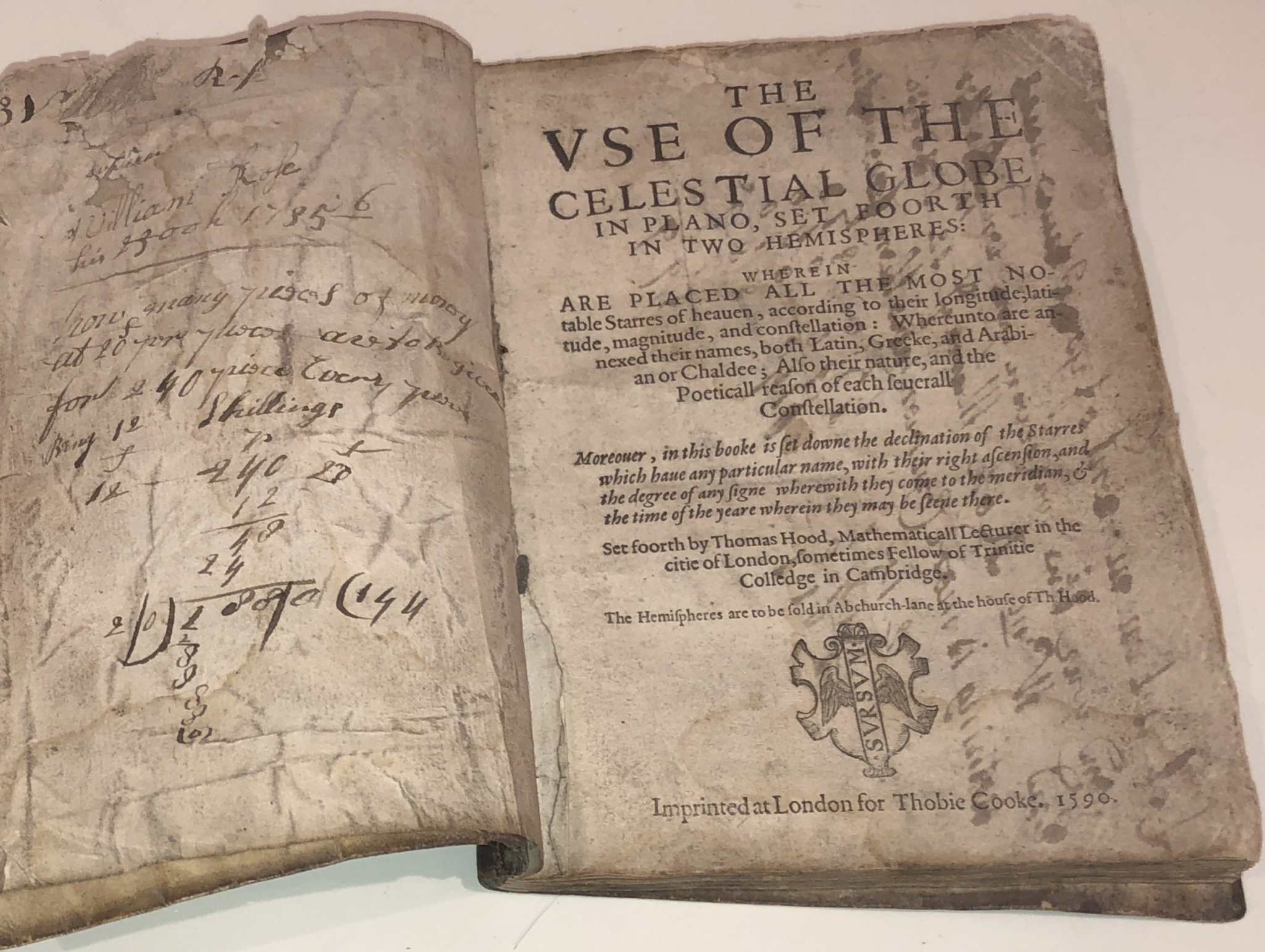Description
Thomas Hood. The use of the celestial globe in plano, set foorth in two hemispheres: wherein are placed all the most notable starres of heaven according to their longitude, latitude, magnitude, and constellation . . . London: Cooke, 1590.
Small 4to, ff. [iv], 43, Roman and Black letter.
Provenance: 18th century ownership inscriptions to front endpapers and title verso.
First edition of this very rare navigational manual. The text, in the form of a dialogue between a master and a student, “was aimed at helping the reader recognize the stars and their constellations. It included a description of the great circles in the sky, ways to locate a star in celestial latitude and longitude, an alphabetical list of the most notable stars and their positions, and a survey of the constellations and their history and mythology. There was an interesting discussion of the nova of 1572, whose appearance in Cassiopeia provided support for the Copernican system over the Ptolemaic system. Hood countered some of the explanations proposed by traditionalists of the latter system, such as the nova being a new comet or a star that had been previously hidden from view by an ‘exhalation’ in the sky … Hood also described ways of classifying the stars (e.g., according to their magnitudes, color, form, and twinkling)” (Kanas, Star Maps (2012), pp. 146-8).
The title page announced that one could buy from Mr Hood at his house in Abchurch Lane two hemispheres to use with the present text. They illustrated the stars and constellations by human and animal figures. These were, however, very rarely united with the book. There is a set of the hemispheres in the British Library (the only copy listed on STC), as well as a copy of the text (without the plates).
Thomas Hood (1556-1620) was the son of a merchant taylor who developed an interest in mathematics and astronomy. He attended Cambridge University and was a Fellow of Trinity College. He then moved to London, where he actively lectured in the 1580s and 1590s. He was a follower of Copernicus, and his lectures helped to popularize Copernican theory in England.
ESTC 118875; Hind I, p. 139; Houzeau & Lancaster 2785; Taylor, ‘Late Stuart and Early Tudor Geography’, p. 346; not in Honeyman. Only 4 copies have appeared at auction in the last 80 years (all lacking the plates).
A good unpressed copy bound in contemporary limp vellum (title page soiled and slightly frayed at fore-edge, old inscription on verso showing through to recto, damp stain in upper outer corner, a few thumb marks and oil splashes, vellum soiled and creased). Sixteenth-century English scientific books are rarely found in unrestored contemporary bindings.










